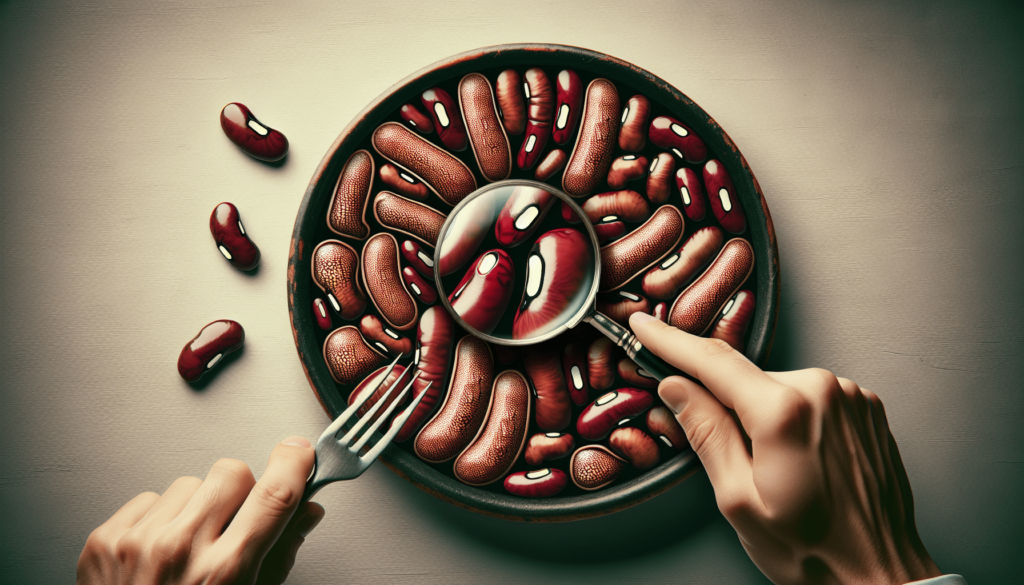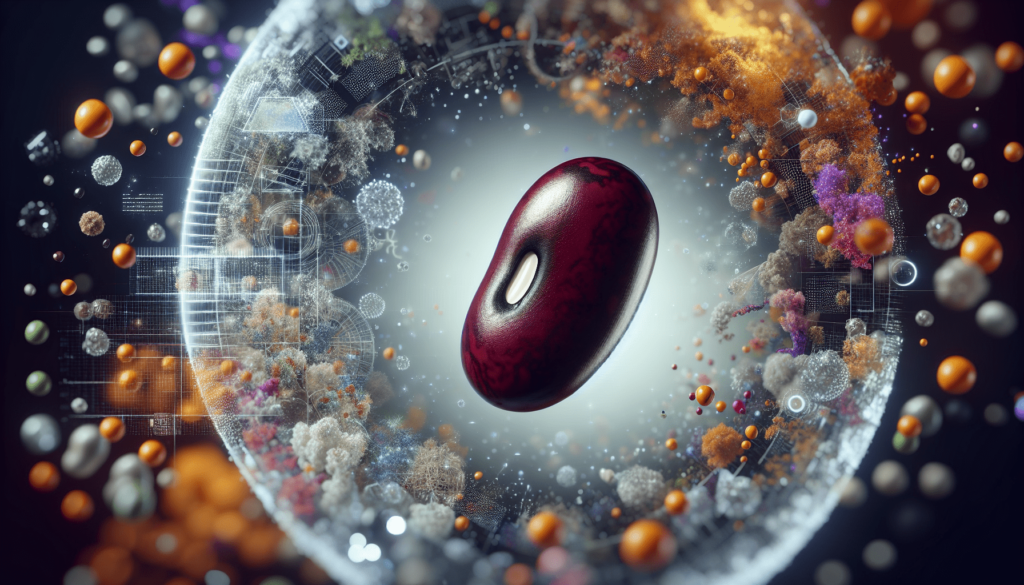If you’re looking for a natural way to stabilize your blood sugar levels, look no further than the humble bean. Beans are not only delicious and versatile in the culinary world, but they also play a vital role in regulating blood sugar. Packed with fiber, protein, and complex carbohydrates, beans have a low glycemic index, meaning they release glucose into the bloodstream gradually. This slow release helps prevent spikes in blood sugar levels, making beans an excellent choice for those with diabetes or anyone seeking to maintain balanced blood sugar levels. So next time you’re planning your meals, don’t forget to include beans for a healthful and stable blood sugar experience.

The Impact of Blood Sugar Levels
Understanding blood sugar levels
Understanding your blood sugar levels is crucial for maintaining overall health and well-being. Blood sugar, also known as blood glucose, refers to the concentration of glucose in your bloodstream. Glucose is the primary source of energy for your body’s cells, and it comes from the foods you eat, especially carbohydrates.
When you consume carbohydrates, your body breaks them down into glucose, which is then absorbed into your bloodstream. This causes your blood sugar levels to rise. However, it’s important to note that not all carbohydrates affect blood sugar levels in the same way. The rate at which a particular food raises your blood sugar is determined by its glycemic index (GI), which we will discuss later.
The importance of stable blood sugar levels
Maintaining stable blood sugar levels is vital for several reasons. When your blood sugar levels are consistently too high or too low, it can have significant impacts on your health.
High blood sugar levels, often associated with diabetes, can lead to serious complications such as heart disease, kidney damage, nerve damage, and eye problems. On the other hand, low blood sugar levels, known as hypoglycemia, can cause dizziness, confusion, weakness, and, in severe cases, loss of consciousness.
By keeping your blood sugar levels stable, you can reduce the risk of developing diabetes, as well as maintain consistent energy levels, manage your weight effectively, and optimize cognitive function. One effective way to achieve stable blood sugar levels is by incorporating beans into your diet.
Benefits of Stabilized Blood Sugar Levels
Reduced risk of diabetes
One of the significant benefits of stabilized blood sugar levels is a reduced risk of developing diabetes. The slow release of carbohydrates found in beans can help prevent sudden spikes in blood sugar and insulin levels. Additionally, the high fiber content in beans slows down the absorption of glucose into the bloodstream, promoting better blood sugar control.
Improved energy levels
When your blood sugar levels are stable, you experience consistent and sustained energy levels throughout the day. Unlike refined carbohydrates that cause rapid blood sugar spikes followed by crashes, beans provide a steady release of glucose, preventing energy fluctuations. This stable energy supply allows you to stay focused, productive, and avoid the dreaded mid-afternoon slump.
Better weight management
Maintaining a healthy weight is essential for overall health, and stabilized blood sugar levels can play a crucial role in weight management. Beans, being low in fat, high in protein and fiber, make you feel fuller for longer. This can help curb your appetite, prevent overeating, and contribute to healthy weight loss or maintenance.
Enhanced cognitive function
Your brain relies on a steady supply of glucose to function optimally. When blood sugar levels fluctuate dramatically, it can affect cognitive function, leading to difficulties in concentration, memory, and decision-making. By incorporating beans into your diet, you provide your brain with a stable and consistent source of glucose, promoting improved cognitive performance and mental clarity.
Introduction to Beans
Types of beans
Beans come in various shapes, sizes, and colors, each with its own unique taste and texture. Some popular types of beans include black beans, kidney beans, chickpeas, lentils, and pinto beans. These beans are widely available and can be easily incorporated into a variety of dishes.
Nutritional composition of beans
Beans are a nutrition powerhouse, rich in essential nutrients that support overall health. They are an excellent source of plant-based protein, complex carbohydrates, dietary fiber, vitamins, and minerals. Beans are low in fat and cholesterol-free, making them a healthy addition to any diet. Their nutrient profile varies slightly depending on the specific bean variety.
The Impact of Beans on Blood Sugar
Low glycemic index of beans
The glycemic index (GI) is a scale that measures how quickly and how much a particular food raises your blood sugar levels. Foods with a low GI, such as beans, are digested and absorbed more slowly, resulting in gradual and gentle increases in blood sugar levels.
Beans have a low GI, making them an ideal food for maintaining stable blood sugar levels. This low GI value is attributed to their complex carbohydrate content and the presence of fibers and resistant starches.
Slow release of carbohydrates
Beans provide a slow and steady release of carbohydrates into the bloodstream. Their complex carbohydrates take longer to break down and convert into glucose compared to simple carbs found in sugary foods or refined grains. This slow release of carbohydrates helps prevent sudden spikes and crashes in blood sugar levels, promoting stability and control.
Fiber content and blood sugar regulation
Beans are an excellent source of dietary fiber, with both soluble and insoluble fiber present in varying amounts. Fiber plays a crucial role in regulating blood sugar levels by slowing down the absorption of glucose from the digestive system into the bloodstream. This helps prevent rapid blood sugar spikes, promoting more consistent and stable levels.
Protein content and blood sugar management
Protein is an essential macronutrient that can influence blood sugar levels. Beans are a great source of plant-based protein, making them an excellent choice for individuals looking to manage their blood sugar levels. Protein helps slow down the digestion and absorption of carbohydrates, resulting in a more gradual rise in blood sugar.

Specific Bean Varieties and Their Effects
Black beans
Black beans are small, dark legumes known for their rich, earthy flavor. They are high in fiber, protein, and various essential nutrients such as folate, manganese, and iron. When it comes to blood sugar management, black beans have a low GI, contributing to stable blood sugar levels.
Kidney beans
Kidney beans, as the name suggests, have a distinct kidney shape and come in various colors. They are an excellent source of plant-based protein, fiber, and several minerals like potassium and magnesium. With their low GI value, kidney beans are a valuable addition to a blood sugar-friendly diet.
Chickpeas
Chickpeas, also known as garbanzo beans, are versatile legumes with a slightly nutty flavor. They are packed with protein, fiber, and micronutrients such as folate and iron. Chickpeas have a low GI, allowing for better blood sugar control and stability.
Lentils
Lentils come in different colors, including green, brown, and red, and offer a mild, earthy taste. They are an excellent source of plant-based protein, fiber, and iron. Lentils have a low GI, which means they have a minimal impact on blood sugar levels, making them an ideal choice for maintaining stability.
Pinto beans
Pinto beans are medium-sized beans that have a mottled, speckled appearance and a creamy texture. They are rich in protein, fiber, and various minerals like potassium and magnesium. Pinto beans have a low GI, helping to keep blood sugar levels in check.
Cooking Methods and Blood Sugar
Effect of cooking on bean’s glycemic index
The way you cook beans can influence their glycemic index. Long cooking times, such as boiling or pressure cooking, can break down some of the complex carbohydrates in beans, increasing their GI. However, this increase is generally minimal and does not significantly impact their overall ability to stabilize blood sugar levels.
Recommended cooking techniques for blood sugar stability
To maximize the blood sugar-stabilizing effects of beans, it is recommended to cook them using methods that preserve their nutritional value and minimize GI increases. Soaking dried beans overnight before cooking can help reduce cooking time and maintain their nutrient content. Other cooking methods such as steaming, baking, or using a slow cooker can also be effective in preserving the low GI of beans.
Incorporating Beans into a Balanced Diet
Portion control and frequency
Incorporating beans into your diet should be done with consideration for portion control and frequency. While beans offer many health benefits, they also contain calories, so it’s essential to consume them in moderation. A serving size of beans is typically around half a cup. Aim to include beans in your meals a few times a week to experience their positive effects on blood sugar stability.
Combining beans with other food groups
To create a nutritionally balanced meal, it’s beneficial to combine beans with other food groups. Pairing beans with whole grains, such as brown rice or quinoa, helps provide a complete protein source. Vegetables, fruits, and lean proteins can also complement the nutritional composition of beans, making your meals more satisfying and nourishing.
Recipes and meal ideas
There are countless ways to incorporate beans into your meals, whether you’re a fan of soups, salads, wraps, or stir-fries. Here are a few recipe ideas to get you started:
- Black bean and quinoa salad with a colorful medley of vegetables and a zesty lime dressing.
- Kidney bean chili with lean ground turkey or tofu, tomatoes, and a blend of spices.
- Roasted chickpea and vegetable wrap with hummus and a whole-grain tortilla.
- Lentil curry with fragrant spices, coconut milk, and a variety of vegetables.
- Pinto bean and vegetable stir-fry with soy sauce, garlic, and your favorite stir-fry veggies.
Get creative in the kitchen and explore the vast array of flavors and culinary possibilities that beans offer!
Additional Tips for Blood Sugar Management
Timing of meals and bean consumption
In addition to incorporating beans into your diet, it’s essential to pay attention to the timing of your meals and bean consumption. Spread your carbohydrate intake evenly throughout the day to ensure a constant supply of glucose. Including beans in your meals, whether it’s breakfast, lunch, or dinner, can provide sustained energy and help maintain stable blood sugar levels.
Consideration of overall diet
While beans can play a significant role in stabilizing blood sugar levels, it’s essential to consider your overall diet. Make sure to include a variety of other nutrient-dense foods, such as fruits, vegetables, whole grains, and lean proteins. Balancing your meals and snacks with a combination of these food groups will contribute to overall blood sugar stability and a well-rounded diet.
Monitoring blood sugar levels
If you have diabetes or are at risk of developing it, monitoring your blood sugar levels is crucial. Regularly checking your blood glucose levels can help you understand how your body responds to different foods, including beans. Consult with your healthcare provider to establish appropriate monitoring protocols and to ensure optimal blood sugar management.
Potential Risks and Precautions
Allergies and sensitivities
While beans are generally safe for most people, some individuals may have allergies or sensitivities to certain types of beans. If you experience symptoms such as itching, hives, or difficulty breathing after consuming beans, it’s important to seek medical attention and get properly diagnosed. Your healthcare provider can guide you on suitable bean alternatives or recommend appropriate dietary modifications.
Gas and bloating
It’s no secret that beans can sometimes cause gas and bloating. This is mainly due to their high fiber content and the presence of certain sugars that can be challenging for some people to digest. Soaking dried beans before cooking, rinsing canned beans, and gradually increasing your bean intake can help reduce the likelihood of experiencing excessive gas and bloating.
Interaction with medication
If you’re taking medication for diabetes or other health conditions, it’s crucial to consult with your healthcare provider before making any significant dietary changes. While incorporating beans into your diet can have numerous benefits, they may interact with certain medications, leading to unwanted effects. Your healthcare provider can provide personalized guidance based on your specific health needs.
Conclusion
Beans play a valuable role in maintaining stable blood sugar levels and promoting overall health. Their low GI, slow release of carbohydrates, high fiber content, and protein composition make them an excellent addition to a blood sugar-friendly diet. By incorporating various bean varieties into your meals, you can reduce the risk of diabetes, enhance energy levels, manage weight effectively, and promote cognitive function. Remember to cook beans using methods that preserve their low GI and pair them with other nutrient-dense foods for balanced meals. With proper portion control, timing, and consideration of your overall diet, beans can be a delicious and nutritious staple in your quest for blood sugar management.
